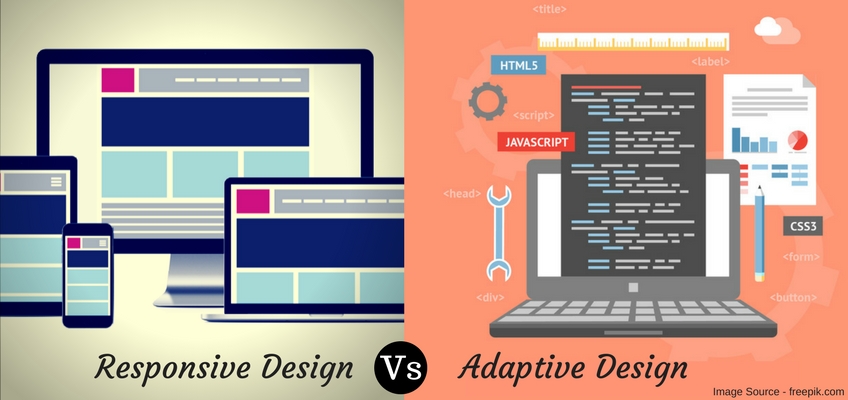April 26, 2018

It’s a well-known fact that mobile devices can never be disregarded, in this era of technology savvy fast life and website design world. An ever-increasing number of people are utilizing mobile devices like tablets, Smartphone to visit sites and for other surfing the internet. That generates a need that your website ought to be easy and properly optimized to see on mobile devices, else you're losing guests and driving less activity to your site. And all the more essentially sites that have a responsive outline and adaptive designs are collecting better outcomes, as web crawlers now have been developed to give higher priority to these locales.
The industry of website design and development has changed significantly within past few years and will be kept on changing. With regards to picking the correct design for your site, there are various components to remember. These incorporate style, typography, client experience, execution and responsiveness or adaptability of that site on various devices. As nowadays, your clients are requesting to see your site not just on a desktop screen , but also on a tablet or a mobile device.
On the off chance that you are seeing a website on a mobile device and you can see that it's properly optimized for your mobile screen resolution, then there are high chances that it's most likely worked in one of these outlines that means responsive or adaptive. Responsive and Adaptive websites are fundamentally the same as they both modify the UI of a site contingent upon the width of the program window or size of your device screen. The manner by which they do this is the thing that makes the two methods differ from one another.
Responsive Web Design gives the ideal optimization of a site, regardless of what kind of gadget the client is seeing it on from mobile devices to personal computer screens. So regardless of the amount you resize the screen, that same format will consequently react to that size. The responsive plan is a more up to date answer for the portable device users. Rather than creating a completely isolated site, you can basically make one form that is receptive to various screen sizes. A responsive site demonstrates content in light of the accessible program space. In the event that you open a responsive site on the PC and after that change the extent of the program window, the content and outline will move powerfully to orchestrate itself ideally for the program window. That is on the grounds that it utilizes CSS standards to change the style in light of the gadget measure. On mobile devices, this procedure is programmed; the site checks for the accessible space and after that present itself in the perfect course of action.
Responsive Website Design implies that clients can get to your online world and appreciate as quite a bit of it on their handheld gadget or mobile screens as they would on a large screen. For this to be valid, responsive plan requires a decent conceptualization of the site and profound information of the necessities and needs of the end clients. Regardless of whether the program window is estimated to 100-200px wide, or 1000px, the page components will dependably acclimate to a predefined extent guaranteeing that the page dependably looks great.
There are various advantages of this approach. The most unmistakable preferred standpoint is that the code for website design doesn’t require to change for every device whether it’s portable, desktop, or any size in the middle.
Advantages of Responsive Website Design:
Disadvantages of Responsive Website Design:
Adaptive Web Design
Adaptive Website Composition is quite different compared to responsive outline in that there isn't one design that dependably changes. Rather, there are a few formats for various screen sizes. What's more, the format utilized relies upon the screen estimate utilized. For instance, there could be a particular format for mobile devices, tablets, and desktop every one of which are made ahead of time. These three plans look out for standby until the point that somebody visits the site. The site distinguishes the kind of gadget utilized, and conveys the pre-set web design for that particular gadget. Here, the server recognizes the gadget compose that the guest is utilizing and after that heaps the right form of the site.
In adaptive outline, it's require to create six plans for the six most normal screen widths; as 320px, 480px, 760px, 960px, 1200px, and 1600px. Much the same as responsive plan, versatile outline can likewise be perplexing, on the grounds that the originators need to effectively plan a similar page, at least six unique circumstances. Consider what number of various designs might be required for a site comprising of various pages.
Basically, you have three unique renditions of a particular website
A desktop site
A tablet site
and a mobile site
Advantages of Adaptive Web Design:
Disadvantages of Adaptive Web Design